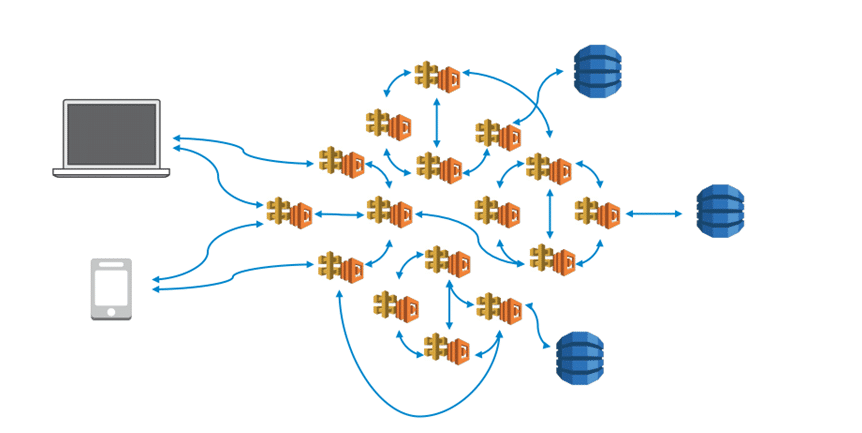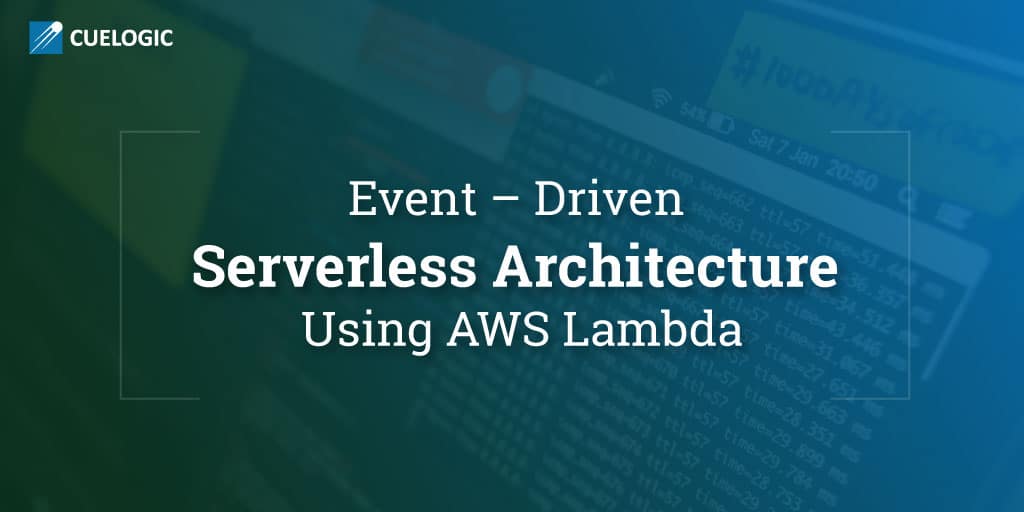If we think about computing in the Cloud Computing age, our mind is quickly drawn towards containers and virtual machines. For instance, during the development of a production environment with both approaches, we think about the need for upgrading the container and patching the OS.
Amazon Web Services (AWS), at the end of the year 2014, announced a new service known as “Lambda” that enables us to focus on business logic rather than infrastructure. Lambda is a serverless compute service that executes your code that is available in the cloud in response to events and accomplishes the entire administration of the computer services automatically and helps for cloud migration and building scalable products
To better understand it, first, let’s understand what is serverless computing service and how does it work.

What is Serverless Computing?
An architecture where the execution of code is entirely managed by the provider of cloud, instead of the conventional method of building applications and deploying them on servers. It means developers need not worry about maintaining, provisioning, and managing servers when deploying code.
What is Serverless Architecture?
Serverless architecture is an application that mainly depends on custom code running in ephemeral containers(Function as a Service) or on third-party services(Backend as a Service), the best-known vendor host of AWS Lambda. Serverless Framework is a single toolkit for deploying the serverless architectures to any provider. By moving most behavior to the front-end by using these ideas, such architectures eliminate the requirement for conventional ‘always on’ server system that is sitting behind an application.
Based on the circumstances, such systems can minimize complexity and operational cost significantly at the cost of the immaturity of supporting services, and vendor dependencies. Several largest tech companies are using serverless for powering their products. It is used in various industries including media, entertainment, CRM, and so on. The serverless architecture provides significant benefits regarding time-to-market, labor, and infrastructure cost.
What does ‘Event-Driven’ mean?
Event-driven implies that a Lambda function is triggered during the occurrence of an event, so the application flow is mainly driven by events. Every AWS lambda function is an event consumer in this kind of architecture. This is because an event invokes them and they have the responsibility to process it.
1. Patterns for Building Event-Driven Serverless Architectures Using AWS Lambda
The patterns for building event-driven serverless AWS Lambda architecture are microservices, event-driven data processing, event workflows, application ecosystems, IoT and mobile applications, and web applications. The serverless code that is written with the help of FaaS can be utilized together with the code that is written in a conventional server style, known as microservices. The monolithic applications are segmented into smaller services in a microservices architecture so that you can build, scale, manage them independently. The benefits of AWS microservices architecture include quality(better scaling and optimizations), innovation(more maintainable code), and speed(faster deployment and development).
For serverless environments, one of the most common applications is to trigger actions after the occurrence of an event as I discussed above in the ‘Event-Driven’ section. In the serverless web applications, there can exist a combination of a running process that determines personal and contextual elements of the user to serve functionality and content that meets the needs of the user. In a serverless environment, the in-built IoT and mobile applications decide on what content must be provided to the user depending on their context.
In an application ecosystem, the workflows or applications are created in a serverless environment and draw on a combination of the products and functionalities of AWS. Recently, the release of AWS Step Functions is adding more sophistication to the serverless workflow possibilities. In step functions, the decision trees can be created, and they can be aligned with AWS products and Lambdas to perform branched workflow actions.
2. Challenges for Building Event-Driven Serverless Architectures Using AWS Lambda
Few challenges arising due to building event-driven serverless AWS Lambda architecture include issues arising with third-party API system, lack of operational tools, and architectural complexity. Security and vendor lock-in concerns, multitenancy problems, and vendor control are some of the issues arising with third-party API system.
The developers today are depending on vendors for monitoring and debugging tools. However, this may change as more and more organizations are moving towards AWS serverless architecture. Another challenge is the distributed computing architectures are time-consuming and complex to build. This applies to microservices architecture and serverless architecture in equal measure.
3. Benefits for Building Event-Driven Serverless Architectures Using AWS Lambda
The benefits of event-driven serverless architecture using AWS Lambda include easier operational management, faster innovation, and reduced operational costs. The serverless platform offers a clear separation between infrastructure applications and services running on top of the platform. The automatic scaling functionality of FaaS reduces the operational management overheads.
As AWS serverless architecture has minimized the system engineering problems in the underlying platform, the product engineers can innovate at a rapid pace. The human resource and infrastructure cost reduction is the advantage of serverless architecture as AWS Lambda bills you the time only when the function is called.
Conclusion
The serverless movement has just begun, and you can expect the vendors of cloud to heavily invest in enhancing the capabilities and feature set of serverless offerings. The monitoring and operational management of FaaS, DevOps solutions teams, serverless frameworks will continue to mature. The agility and globalization demands, IoT proliferation, chat and voice bots, LessOps, serverless, containerization and a lot more trends are at play here. All of these will speed up the serverless adoption.
Many organizations are planning to migrate their production environments to serverless. For instance, Bustle(a media company) is using a serverless architecture to handle 52 million monthly visitors, and there are many more instances where serverless is being utilized. 2017 was very exciting for serverless, and this will continue to explode in 2018.
